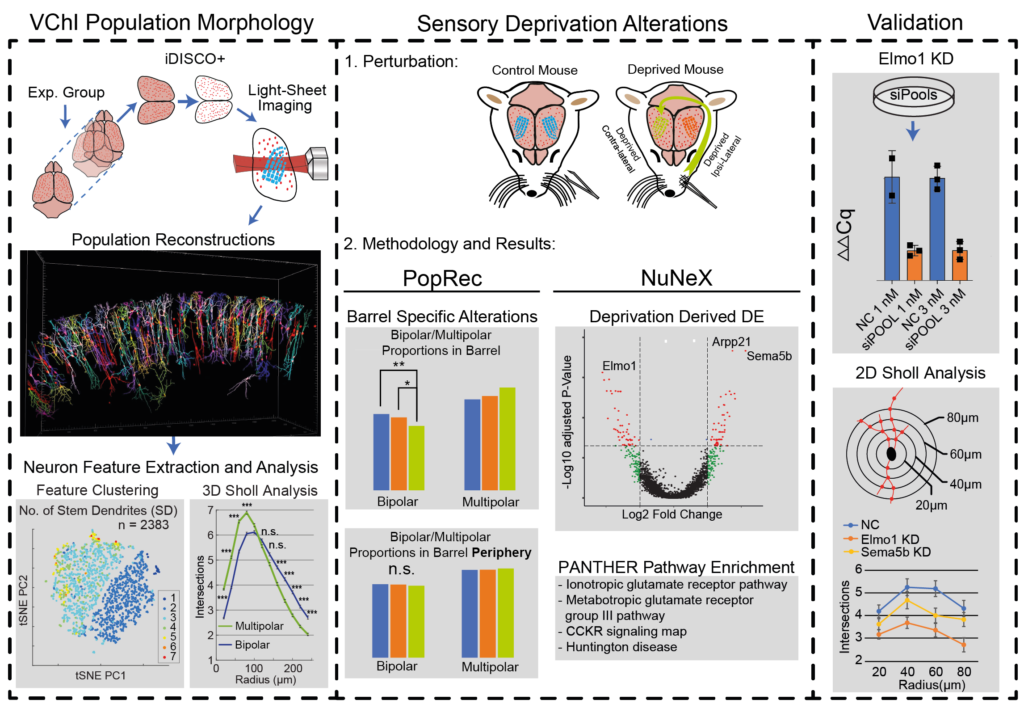A joint ELSC study (led by the Soreq lab and with contributions from the Segev, London, and Habib labs) thoroughly mapped the structural and genetic alterations in thousands of neurons with largely unknown functions in the mouse brain. These neurons are part of the cholinergic brain network, which controls multiple, high-cognitive functions such as attention and learning, and which is imbalanced in AD. The researchers discovered underlying morphological and molecular rules that define this neuronal population, and found valuable clues to the structure-function-genetics relationship for these neurons and their role in the wider brain context. This researchers developed two novel methods that used advanced image processing (PopRec) as well as the precise extraction of a targeted subset of neurons (NuNeX) from a defined brain region. This study was supported by a joint starter grant for the Soreq and London labs, an ELSC PhD scholarship (Nadav Yayon), and post-doctoral fellowships and support by the computation and imaging core facilities.
Figure:

